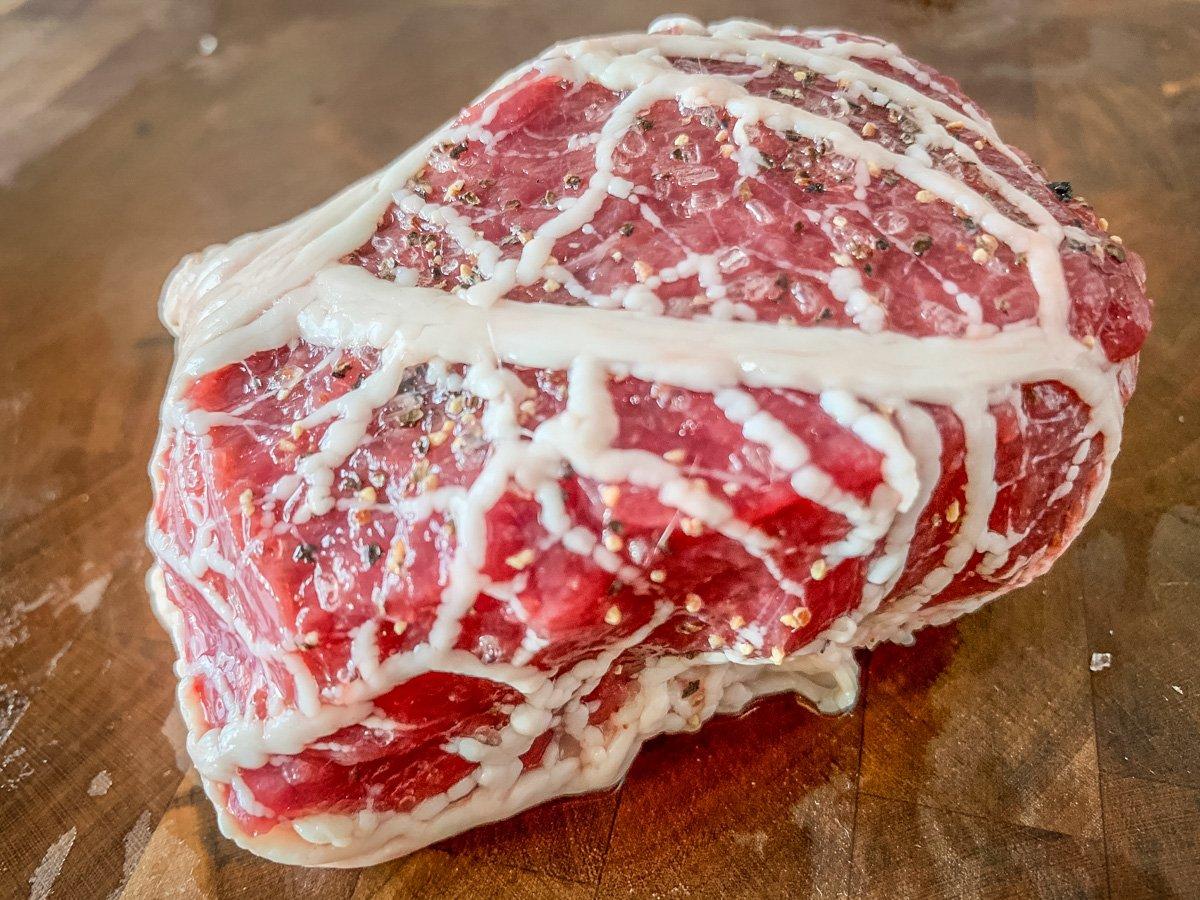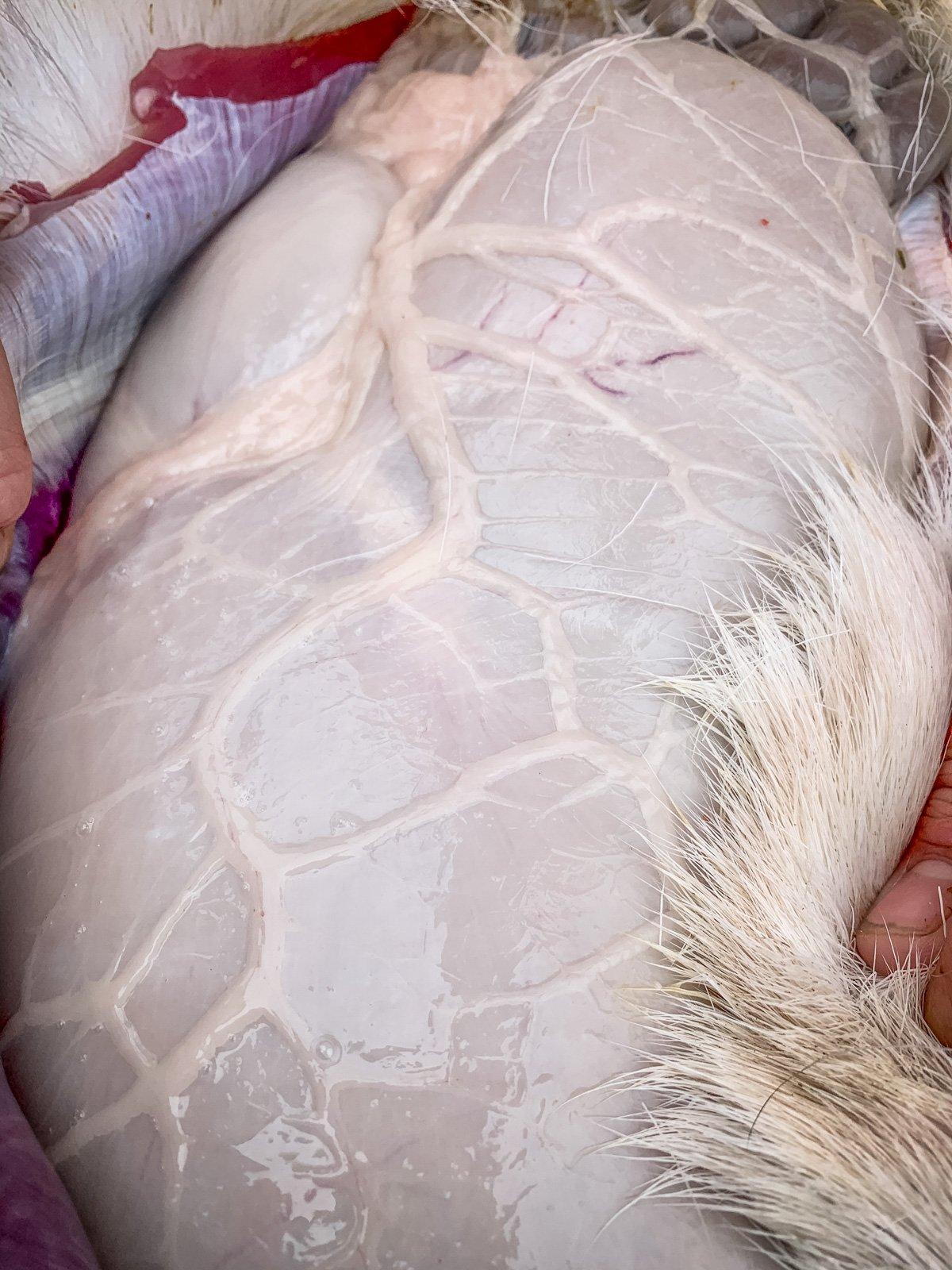Next time you're field dressing a deer, don't leave this valuable part behind
Do you save the caul fat from the deer you kill?
Do I save what?
That's the usual reply I get to the caul fat question. What is it? Caul fat is the lacy fat membrane that surrounds the stomach and intestines. You've seen it every time you've field dressed a deer (or pig, elk, bear or just about anything else). In fact, caul fat is sometimes even known as lace fat. The French call it crépine, which roughly translates as filter or screen.
It's excellent to use for wrapping meat before cooking. The lacy fat melts as the meat cooks, adding a velvety blanket of moisture and flavor as it does. What kinds of meat? Just about anything. Sausages (known as crépinettes in French cooking), meatballs, backstrap, either in medallions or whole, steaks, heart, duck breast, you name it. If it will benefit from extra fat and flavor while cooking, then caul fat is the answer. It does the same thing a layer of bacon would for meat, but without the sometimes overpowering flavor.
To harvest caul fat, first make a good shot, and avoid puncturing the stomach or intestines while you field dress. Caul fat isn't a total loss if you get a small spot of intestinal matter on it — you can just cut that section out — but try to keep it as clean as possible.
As you gently roll the stomach and intestines free from the deer, you will see the layer of caul fat that envelops everything. Use your fingers to gently separate it away from the organs. It will be attached in a few places, most noticeably the spleen, and will need to be cut away from those with your knife. Everything else should peel free with a slight tug.
Try to keep the caul fat clean while transporting; keep a small zip-style bag in your field dressing kit. Drop the fat into the bag and seal it up before adding it to the cooler. Caul fat is fragile, and leaving it to float and jostle around with ice and meat without bagging it first is asking for it to get damaged.
Once you get home or back to camp, you will probably notice a few bits of hair, sticks, leaves, etc. on your caul fat from the field-dressing process. Simply rinse the fat well under lukewarm running water until it's clean, then place it into a clean bag or plastic container with a lid. You can keep caul fat in the refrigerator for a few days, and it freezes well for long-term storage. Because it is a fat, and fat flavor tends to break down quickly in the freezer, I try to use it up within 6 to 12 months.
To thaw frozen caul fat, place it in the refrigerator for a few days prior to use, or simply run it under cold water until thawed, then slightly increase the temperature to make the fat pliable. Spread it out on a large cutting board in a single layer, and use a sharp knife to cut it to the appropriate size for the meat you plan on wrapping.
Wrap the meat like you would a package. Caul fat sticks well to itself, so just overlap the edges and press it together to get it to stay in place. Caul fat-wrapped meat can be grilled, sautéed or fried with excellent results.










